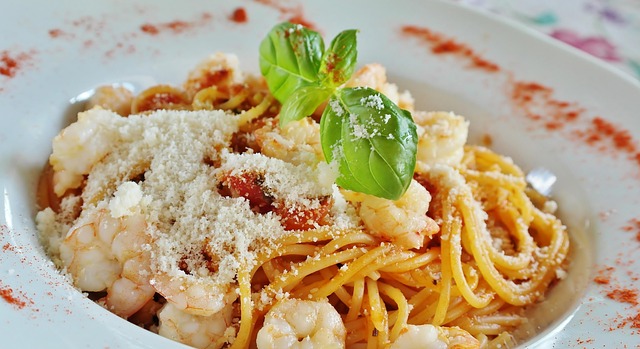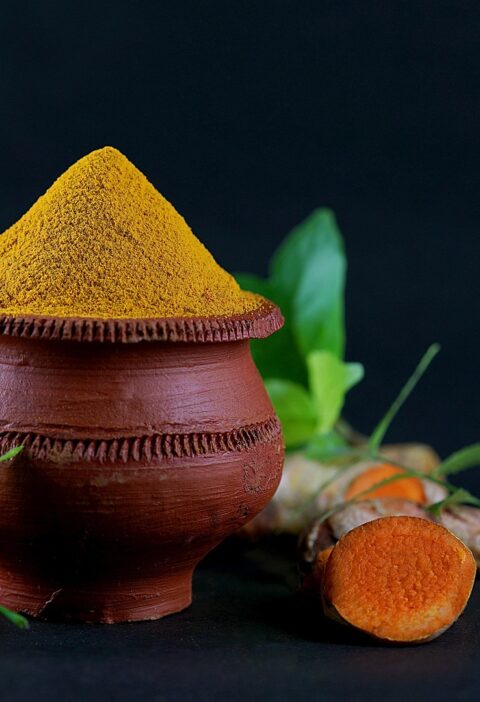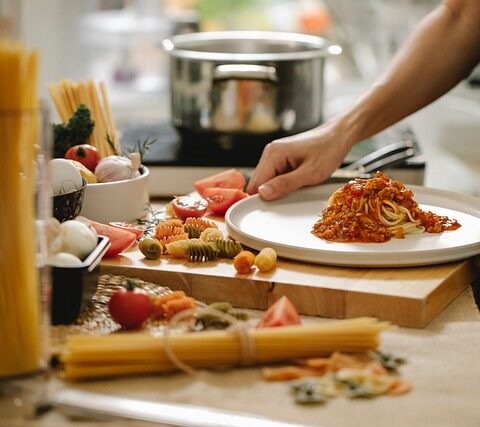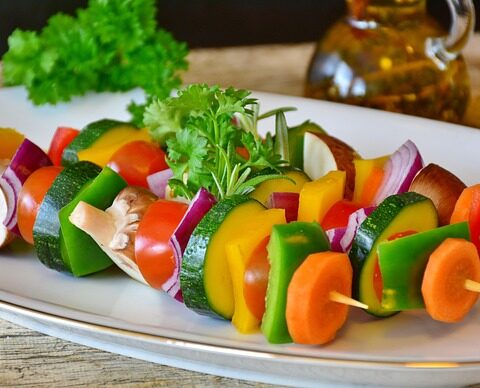There is something almost magical about pasta. It is the comfort food that never disappoints. No matter how tired you are, how long your day has been, or how empty your fridge looks, pasta somehow manages to save the day. But here is the best part: you can make a delicious pasta dish with just one pot. Yes, one pot. No extra pans, no piles of dishes to wash, and no complicated steps to follow. Just one pot, a handful of ingredients, and a warm, hearty meal ready to enjoy.
In today’s fast-paced world, where everyone is trying to balance work, family, and personal time, cooking a meal that tastes amazing and takes little effort feels like winning a small battle. One-pot pasta is exactly that: the perfect balance between taste, convenience, and simplicity. Whether you are cooking for one, feeding your family, or making dinner for friends, this method works every time.
In this article, we will explore how to make a one-pot pasta from scratch, the science behind its preparation, how to select the right ingredients, and how to customize it to suit your taste. You will also learn helpful tricks to make your pasta perfectly creamy, flavorful, and satisfying without the need for fancy ingredients.
How to Make a One-Pot Pasta That Saves Time and Dishes
The idea of cooking everything in one pot might sound too simple to be true. After all, we are used to boiling pasta separately, draining it, and then mixing it into a sauce. But one-pot pasta takes that traditional method and flips it on its head, for good reason.
When you cook pasta, the starch that releases into the water often gets poured down the drain. In one-pot pasta, that starchy water stays in the pot, naturally thickening your sauce and helping it cling perfectly to the noodles. The result is a silky, flavorful dish that feels restaurant-worthy with half the effort.
The beauty of this method is in its flexibility. You can use almost any pasta shape, any sauce base, and any combination of vegetables or proteins you love. It is a blank canvas that welcomes your creativity.
The Basic Formula
One-pot pasta follows a simple formula that you can easily remember and adjust:
- 1 pound of pasta (spaghetti, penne, fettuccine, or your favorite shape)
- 4 to 5 cups of liquid (broth, water, or a mix of both)
- 2 tablespoons of oil or butter
- A selection of vegetables and/or protein (chicken, shrimp, mushrooms, spinach, etc.)
- Seasonings and herbs (garlic, salt, pepper, basil, chili flakes, etc.)
Everything goes into the pot together and cooks at the same time. The key is to keep an eye on the liquid — you want just enough to cook the pasta and create a sauce-like texture at the end.
Step-by-Step Guide to Making the Perfect One-Pot Pasta
Step 1: Choose Your Pasta
While any pasta will technically work, some shapes hold up better in one-pot cooking than others. Short pasta like penne, fusilli, rotini, or rigatoni is ideal because it cooks evenly and holds onto the sauce beautifully. If you prefer long pasta like spaghetti or linguine, break them in half before adding them to the pot to ensure even cooking.
Whole wheat or gluten-free pasta can also work, but keep in mind that they may absorb liquid differently, so adjust your broth or water accordingly.
Step 2: Pick Your Liquid
The liquid is the soul of your dish. Using plain water is fine, but substituting half or all of it with vegetable or chicken broth adds depth of flavor. For a creamier texture, you can mix in some milk or coconut milk. Just be careful not to add dairy too early — it can curdle if boiled for too long.
A good ratio to start with is 4 cups of liquid for every pound of pasta. You can always add more as the pasta cooks and absorbs it.
Step 3: Layer in the Flavors
This is where you start building character. Begin with a drizzle of olive oil or a knob of butter to help prevent the pasta from sticking. Add chopped onions, garlic, and any aromatics you love. Sauté them for a minute or two until fragrant. Then, add your pasta, liquid, and any vegetables or proteins.
For example, if you are making a tomato-based pasta, add a can of diced tomatoes or tomato sauce along with your broth. For something creamy, use broth and milk or add a splash of cream toward the end.
Step 4: Simmer and Stir
Bring the pot to a gentle boil, then reduce the heat to a simmer. Stir occasionally to prevent the pasta from clumping together or sticking to the bottom. As it cooks, you will notice the liquid reducing and turning into a thick, glossy sauce.
The pasta releases starch into the liquid, which helps bind everything together. If it looks too dry before the pasta is fully cooked, add a little extra water or broth. If it is too soupy, let it cook uncovered for a few more minutes.
Step 5: Finish and Serve
When the pasta reaches your desired texture, remove it from the heat. Stir in some grated cheese, fresh herbs, or a squeeze of lemon juice to brighten the flavor. Serve it straight from the pot while it is hot and creamy.
Flavor Variations to Try
1. Creamy Garlic Parmesan Pasta
A comforting classic. Use chicken broth as your base and add minced garlic, a splash of milk, and grated Parmesan cheese. Stir in spinach or peas for color and freshness.
2. Tomato Basil Pasta
For a light and fresh option, combine diced tomatoes, onion, garlic, and basil leaves. Add a bit of red pepper flakes for heat. This version pairs perfectly with crusty bread.
3. Chicken and Mushroom Pasta
Sauté diced chicken and mushrooms before adding the pasta and broth. Finish with a touch of cream and fresh parsley. The earthy flavor of mushrooms makes the sauce rich and satisfying.
4. Spicy Shrimp Pasta
Add shrimp, cherry tomatoes, and a pinch of chili flakes for a seafood twist. Use olive oil and a squeeze of lemon juice to enhance the flavor.
5. Veggie-Packed Pasta
This is perfect for a light dinner or meal prep. Add zucchini, bell peppers, spinach, and carrots. A bit of pesto or a sprinkle of feta cheese can bring everything together beautifully.
Why One-Pot Pasta Works So Well
The secret lies in the starch. When pasta is cooked in a large pot of water, the starch that escapes gets diluted. But when you cook pasta in just enough liquid, that starch thickens the sauce naturally. It creates a silky coating that clings to every strand and bite.
You also get concentrated flavor because nothing is poured away. Every ingredient — from garlic to tomatoes to herbs- releases its essence into the same liquid that cooks your pasta. The result is harmony in a pot.
Common Mistakes to Avoid
- Too much liquid: This will make your pasta soupy. Start with less, then add more if needed.
- Not stirring enough: One-pot pasta needs occasional stirring to cook evenly.
- Overcooking: Keep an eye on the pasta as it softens; it continues to cook even after you remove it from the heat.
- Adding dairy too early: Milk or cream should go in last to prevent curdling.
- Not seasoning properly: Salt your liquid early so that the pasta absorbs flavor as it cooks.
Tips for Perfect One-Pot Pasta Every Time
- Always taste as you go. Adjust salt, pepper, and spices midway through cooking.
- Add greens like spinach or kale at the end to keep their color bright and texture crisp.
- Don’t forget a final touch, fresh herbs, a sprinkle of cheese, or a drizzle of olive oil adds a professional finish.
- If you love thick sauces, let the pasta rest for a few minutes before serving. It will continue to absorb the flavors.
Making It Healthier
One-pot pasta can be as indulgent or as wholesome as you want. Swap regular pasta for whole-grain or lentil-based versions to increase fiber and protein. Use olive oil instead of butter for a lighter fat source. Load up on vegetables for vitamins, minerals, and texture.
You can also skip cream-based sauces and use pureed vegetables like roasted red pepper, cauliflower, or pumpkin to make rich, nutritious sauces with fewer calories.
Meal Prep and Storage Tips
One-pot pasta is perfect for meal prep. You can make a big batch, portion it into containers, and refrigerate it for up to four days. When reheating, add a splash of water or broth to loosen the sauce.
If you prefer to freeze it, let it cool completely first. Store it in airtight containers and freeze for up to two months. Defrost overnight in the refrigerator before reheating.
Why You’ll Love It
One-pot pasta is not a recipe; it’s a cooking philosophy. It teaches you to simplify without sacrificing flavor. It shows you that great food does not have to mean complicated steps or expensive ingredients. It brings joy back to the kitchen, especially on those nights when cooking feels like a chore.
The best part? It is forgiving. Whether you forget to measure something or add an extra handful of cheese, it almost always turns out delicious.
So the next time you are tired after work, don’t reach for takeout. Grab a pot, a box of pasta, and a few pantry staples. In twenty minutes, you’ll have a meal that’s comforting, satisfying, and made entirely in one pot, with no mountain of dishes waiting afterward.








